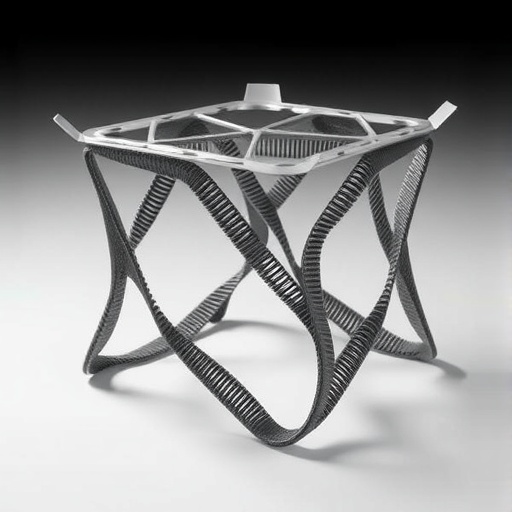However, despite their remarkable performance advantages, composite materials are not without drawbacks. Their primary weakness lies in their layered structure. Unlike aluminum, which can absorb relatively large impacts without catastrophic failure, composites are vulnerable to delamination. Small impacts, which might only dent an aluminum panel, can cause the thin, bonded layers of composite plies to separate or crack. This phenomenon has long been considered the “Achilles’ heel” of composite technology and represents a key challenge for aerospace engineers seeking to maximize both safety and performance.
A research team at the Massachusetts Institute of Technology (MIT) has recently introduced a promising solution to this problem. By innovatively reinforcing the bond between composite layers, they have succeeded in creating materials that are significantly stronger and more resistant to damage than conventional composites. Their findings, published in the journal Composites Science and Technology, highlight the use of carbon nanotubes—extraordinarily strong, nanoscale rolls of carbon atoms—as a structural reinforcement within the composite matrix.
The MIT team, led by postdoctoral researcher Roberto Guzman (now at the IMDEA Materials Institute in Spain) and supervised by Professor Brian Wardle of MIT’s Department of Aeronautics and Astronautics (AeroAstro), embedded forests of vertically aligned carbon nanotubes within the polymer glue that holds carbon fiber plies together. These nanotube “forests” act as nanoscale stitches, penetrating into the tiny crevices of each layer and serving as a scaffold that firmly locks the layers together. Unlike previous reinforcement techniques such as Z-pinning or 3D weaving—which involve inserting relatively large fiber bundles through the plies and often damage the surrounding material—the carbon nanotubes are so small that they do not disrupt the structural integrity of the carbon fibers.
Experimental testing confirmed the effectiveness of this approach. In a tension-bearing test, in which a bolt was inserted through the material and then subjected to pulling forces, the nanotube-stitched composites withstood 30 percent more force than conventional composites before failing. Similarly, in an open-hole compression test, where force is applied to compress the area surrounding a bolt hole, the new composites endured 14 percent more force before cracking. These results indicate a substantial improvement in both tension and compression resistance—two critical performance parameters for aircraft structures.
Professor Wardle explains why this nanoscale solution is so effective: “Size matters. Traditional stitching or pinning techniques introduce reinforcements thousands of times larger than the carbon fibers themselves, causing considerable damage in the process. By contrast, carbon nanotubes are just 10 nanometers in diameter—nearly a million times smaller than carbon fibers—so they integrate seamlessly. Additionally, nanotubes have about a thousand times more surface area than carbon fibers, which greatly enhances their bonding with the polymer matrix.”
The implications of this work extend far beyond the laboratory. Today’s most advanced airliners, such as the Boeing 787 Dreamliner and the Airbus A350, already incorporate over 50 percent composite materials by weight. By improving the strength, durability, and damage tolerance of these composites, the MIT technique could make future aircraft both lighter and safer. In practical terms, it could allow for the design of thinner, lighter structural components that still meet rigorous safety requirements. This means additional weight reduction, more efficient use of fuel, and fewer carbon emissions over the lifespan of each aircraft.
Moreover, the innovation has specific potential in areas where composites are most vulnerable—such as around holes and fasteners. Conventional composites often crack around bolted joints, but the enhanced material developed by the MIT team shows far greater resilience in these critical regions. This could extend the service life of components, reduce maintenance costs, and further increase the economic benefits of composite-heavy aircraft designs.
Roberto Guzman emphasizes the broader impact of their research: “More work needs to be done, but we are optimistic that this technology will lead to stronger, lighter aircraft structures. That translates into enormous amounts of fuel saved, which is not only good for the environment but also for airline operating costs.”
In collaboration with Saab AB, a leading aerospace and defense company in Sweden, the MIT researchers are continuing to explore ways to scale up this technology for industrial applications. If successfully implemented, the carbon nanotube stitching approach could mark a major leap forward in the evolution of aerospace materials—paving the way for the next generation of safer, greener, and more efficient aircraft.
Journal Reference:
Tags: advanced composite materialsadvanced materials in aerospaceadvanced materials researchaerospace engineering challengesaerospace engineering innovationsAirbus and Boeing aircraft designcarbon fiber reinforced plasticsCarbon nanotube compositescarbon nanotube reinforcementcomposite material challengescomposite materials in aviationcost savings for airlinesdelamination in compositesenvironmental benefits of aviation materialsenvironmental benefits of compositesfuel efficiency improvementsfuel efficiency in aviationgreenhouse gas emissions reductionimpact resistance in materialsimpact resistance of compositesimpact resistance of materialsinnovative aerospace technologieslightweight aircraft constructionlightweight aircraft materialslightweight aircraft technologysustainable aviation solutions





